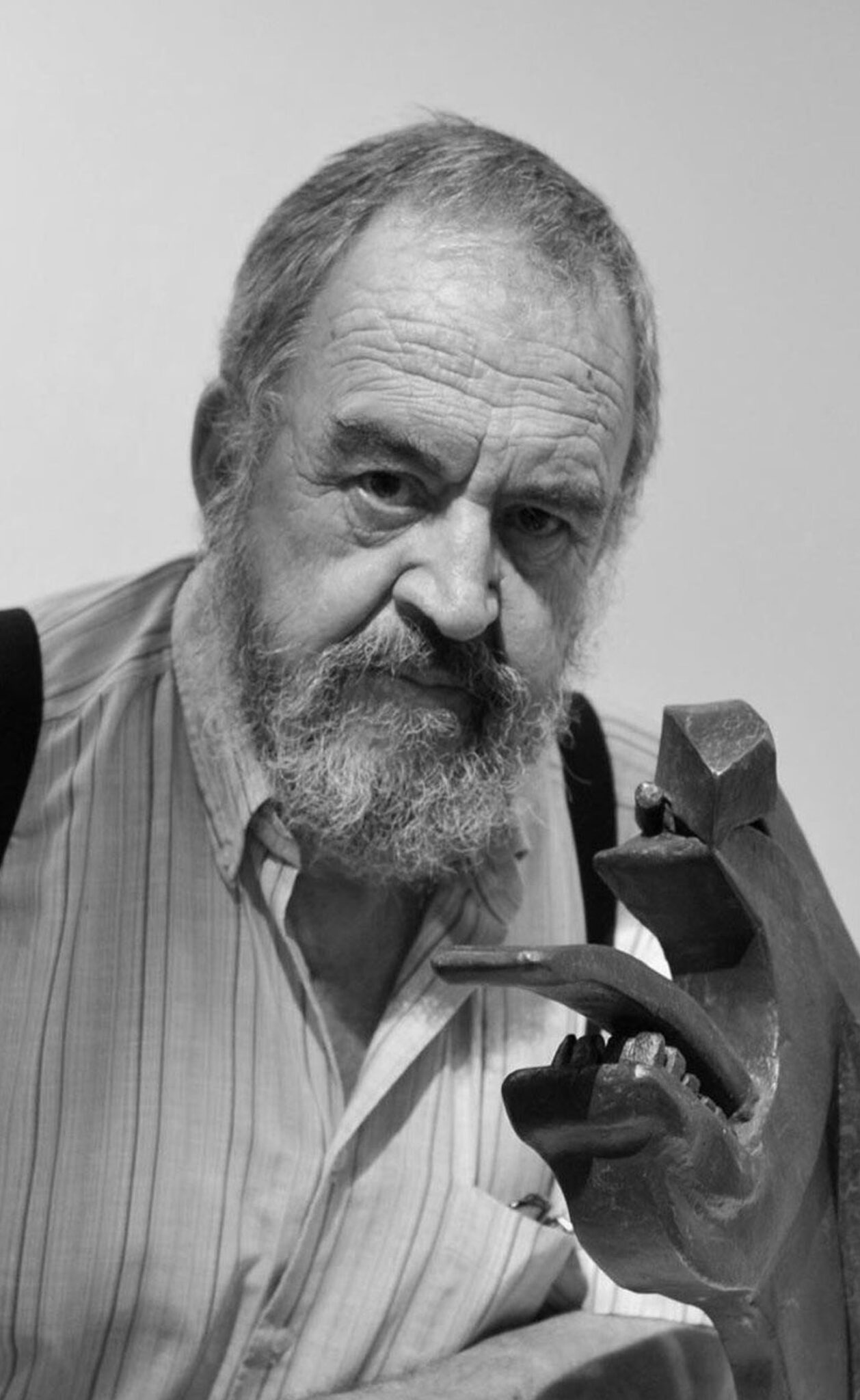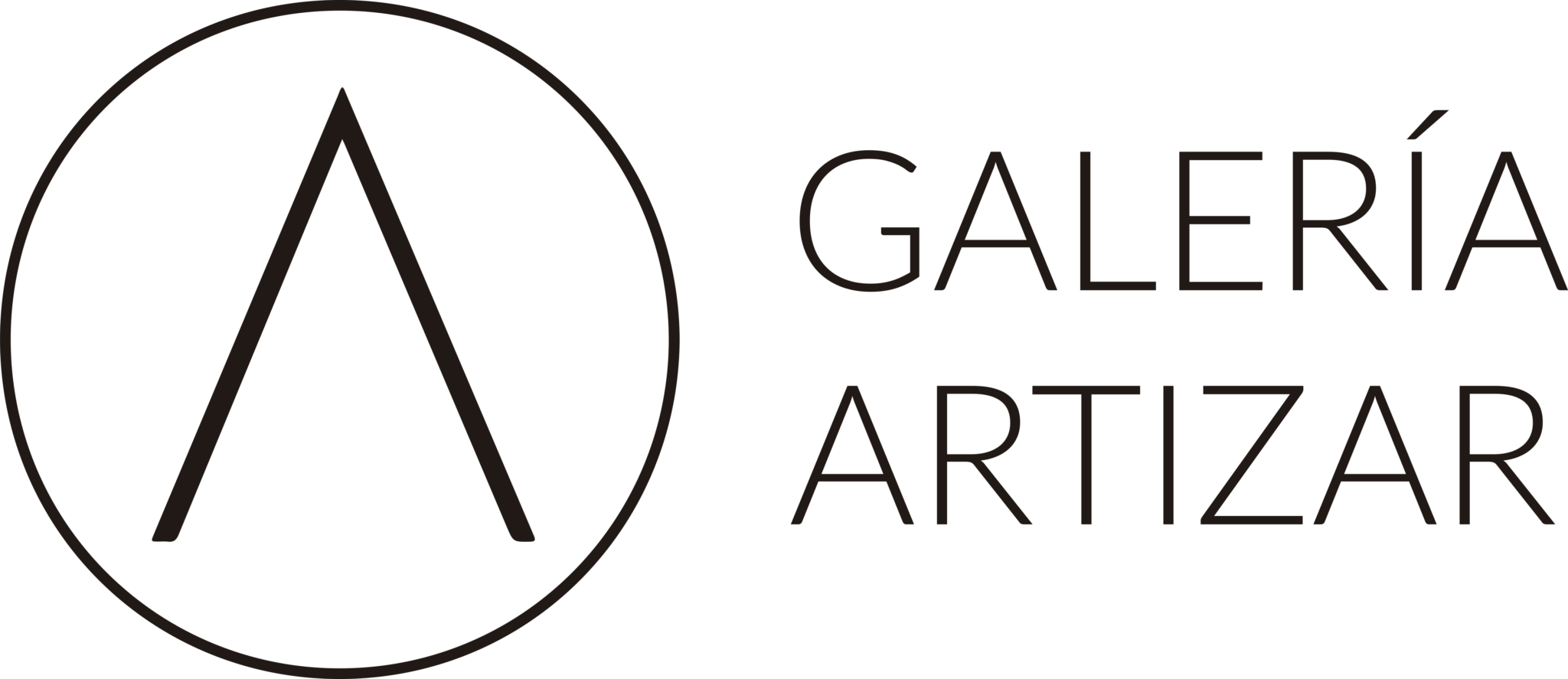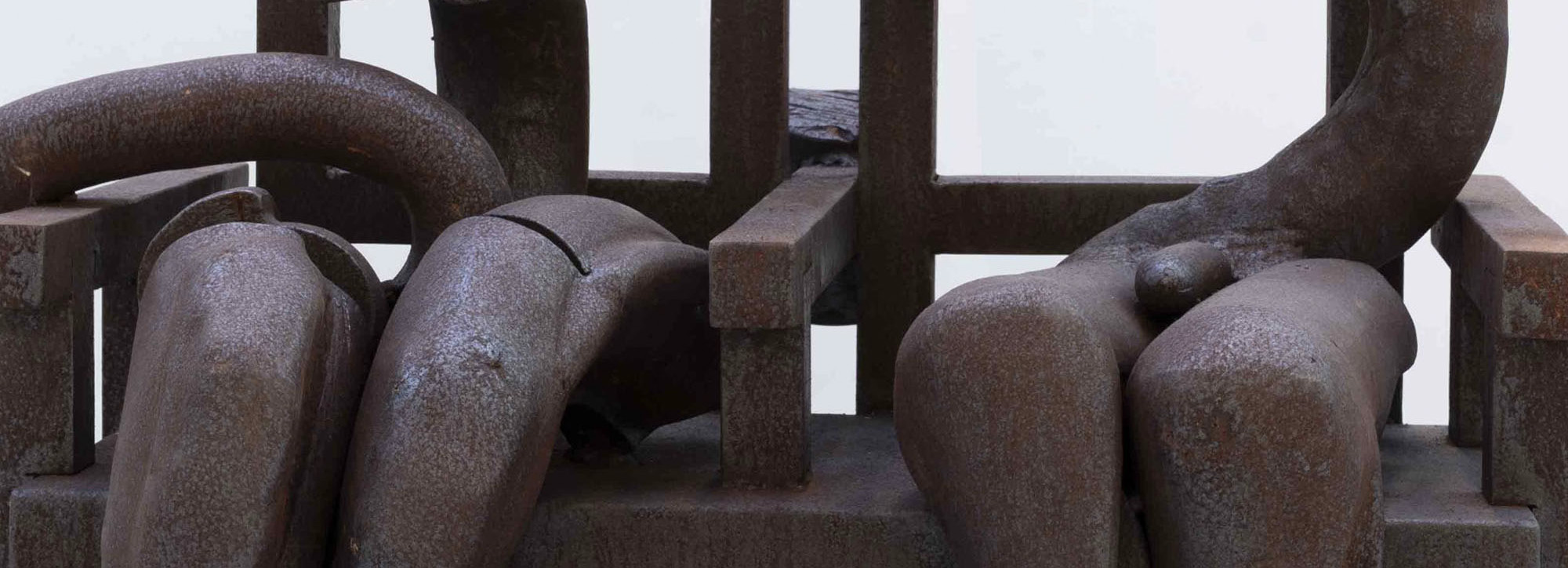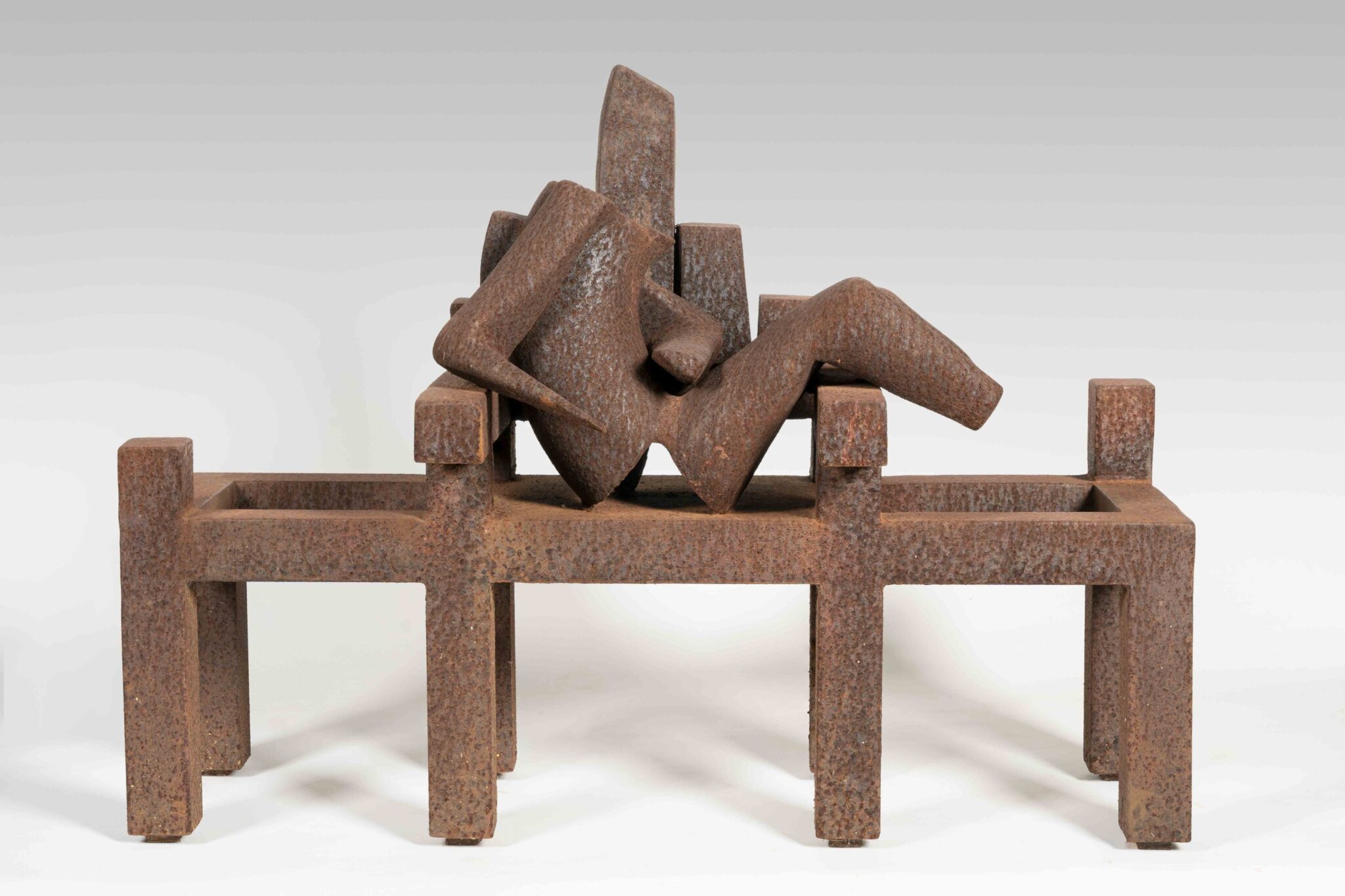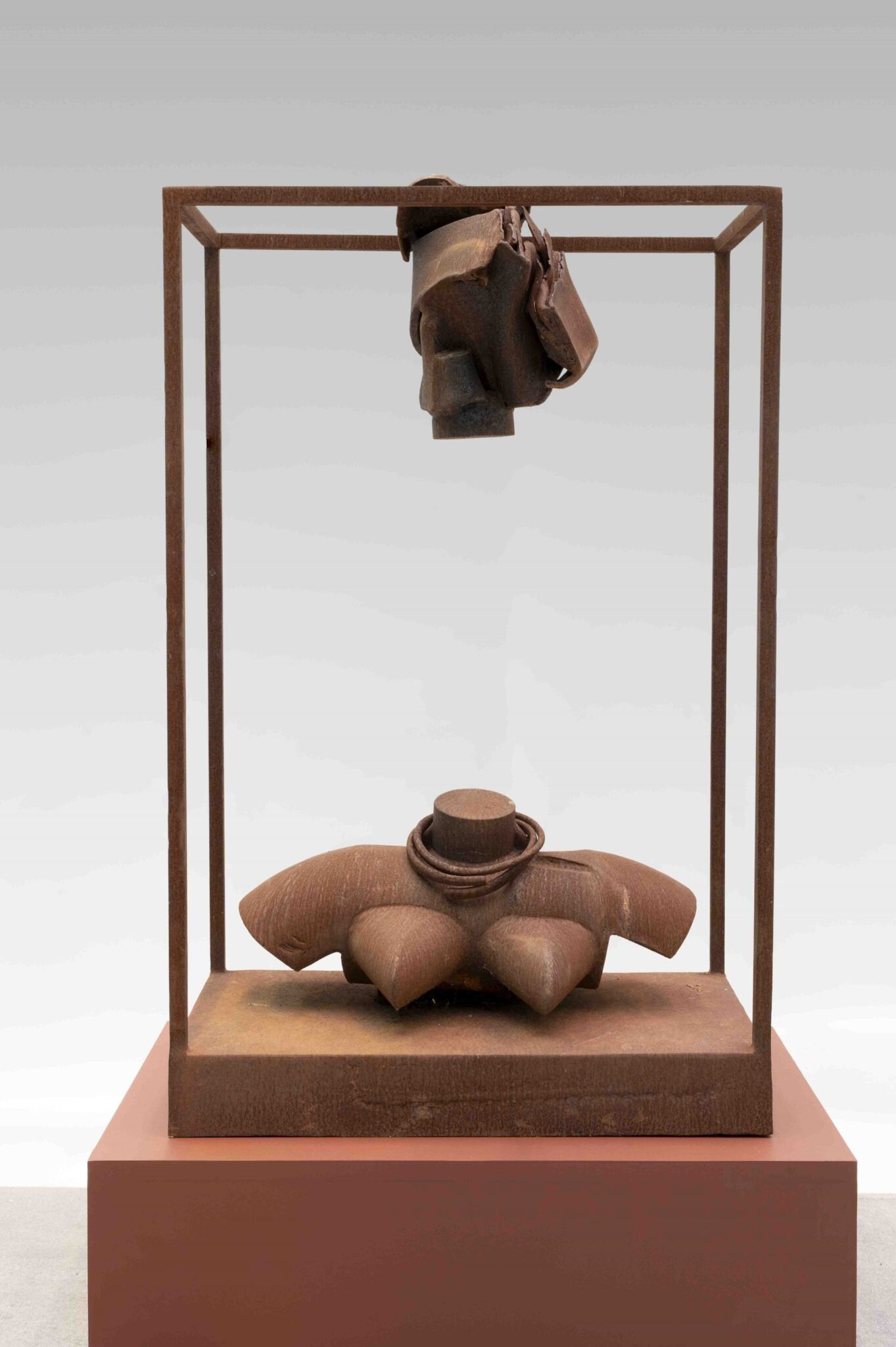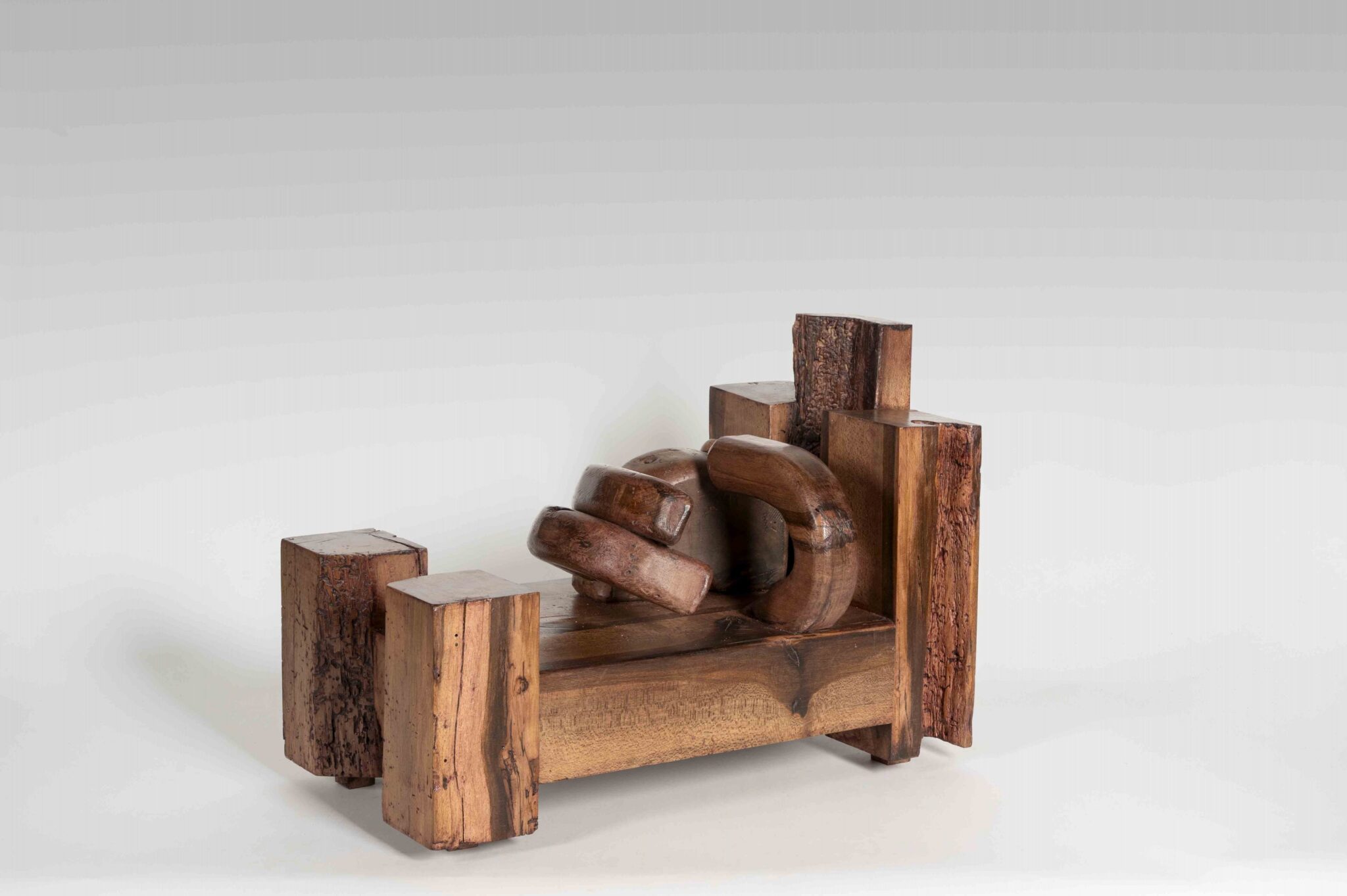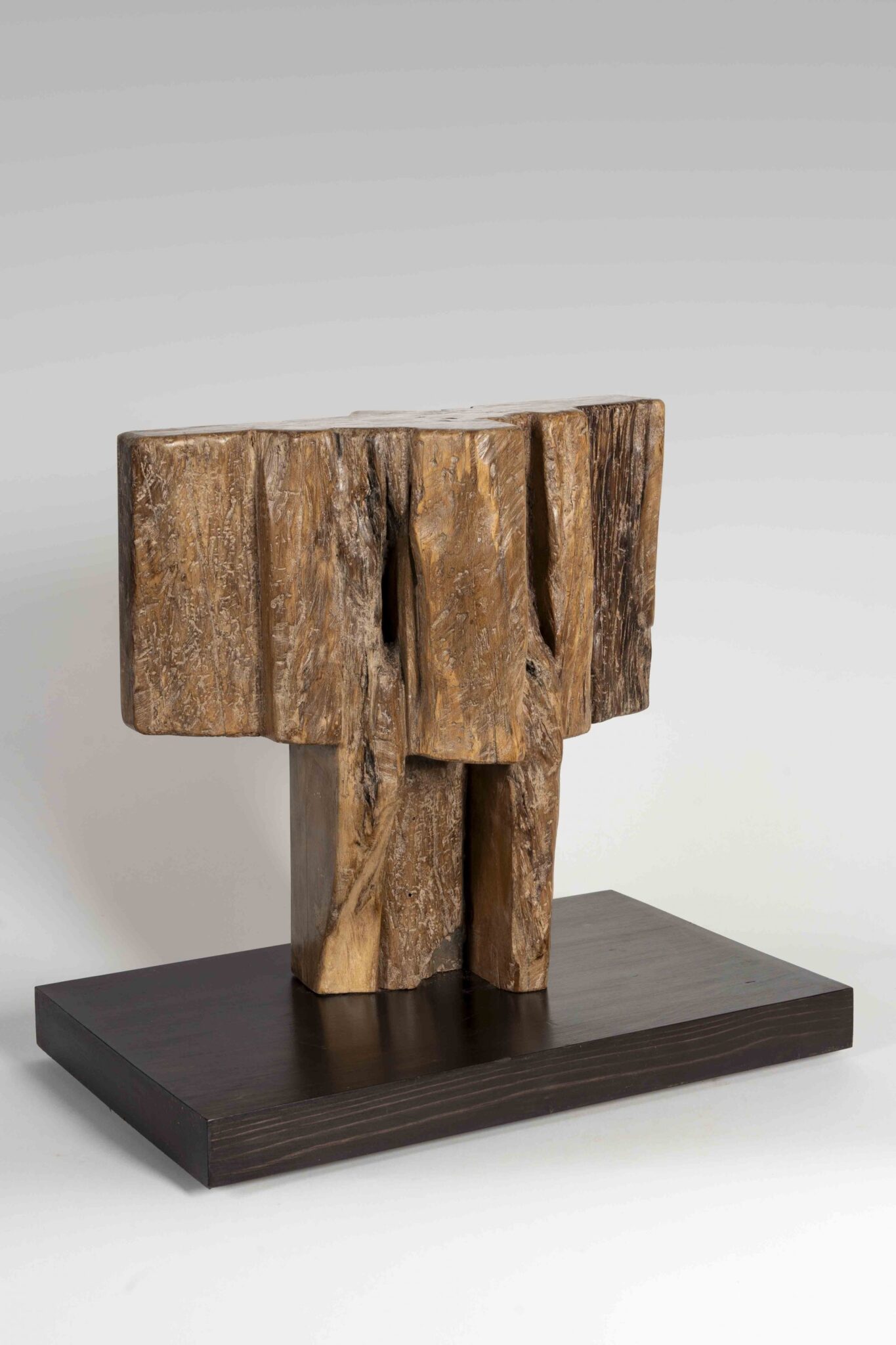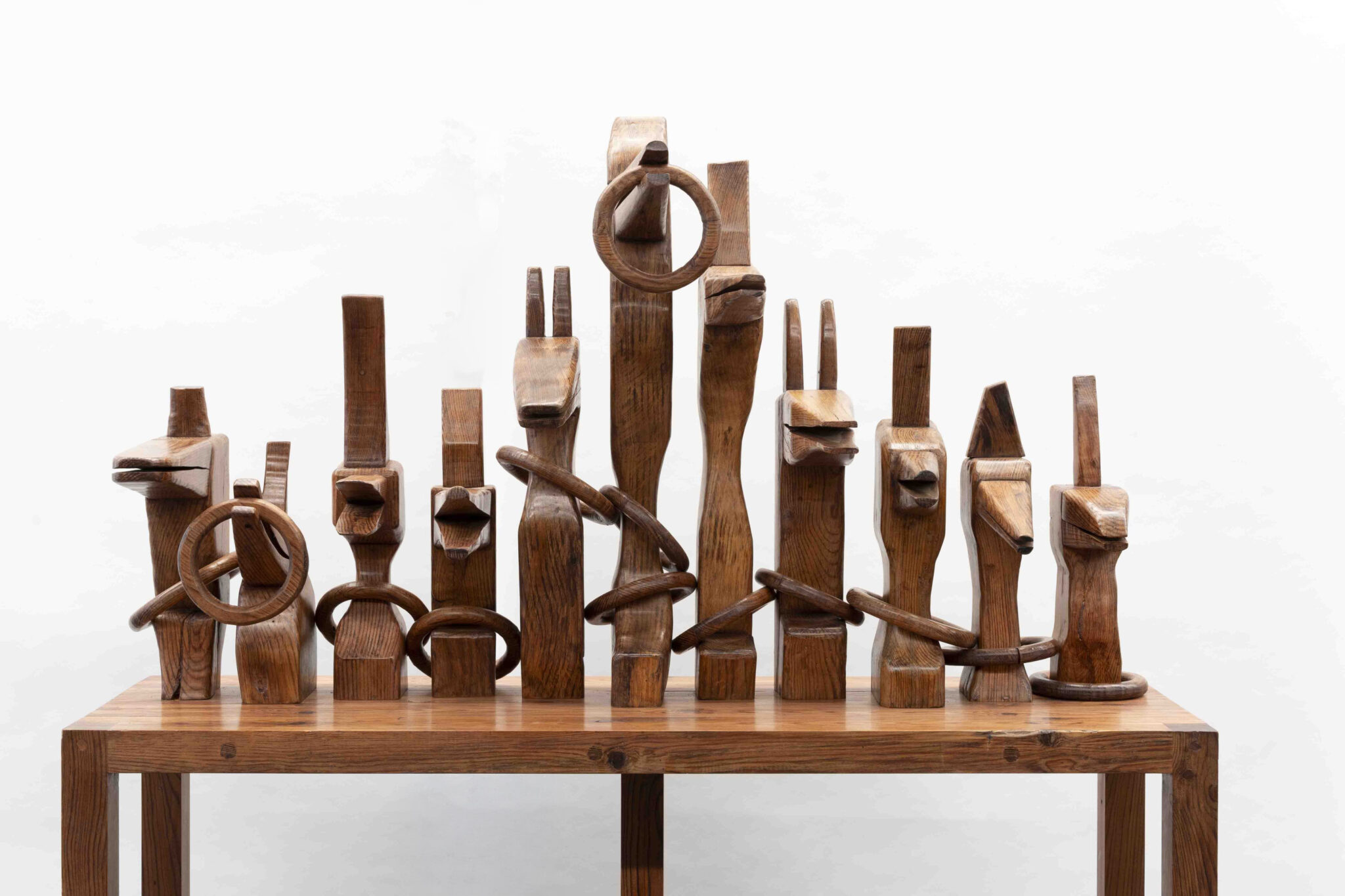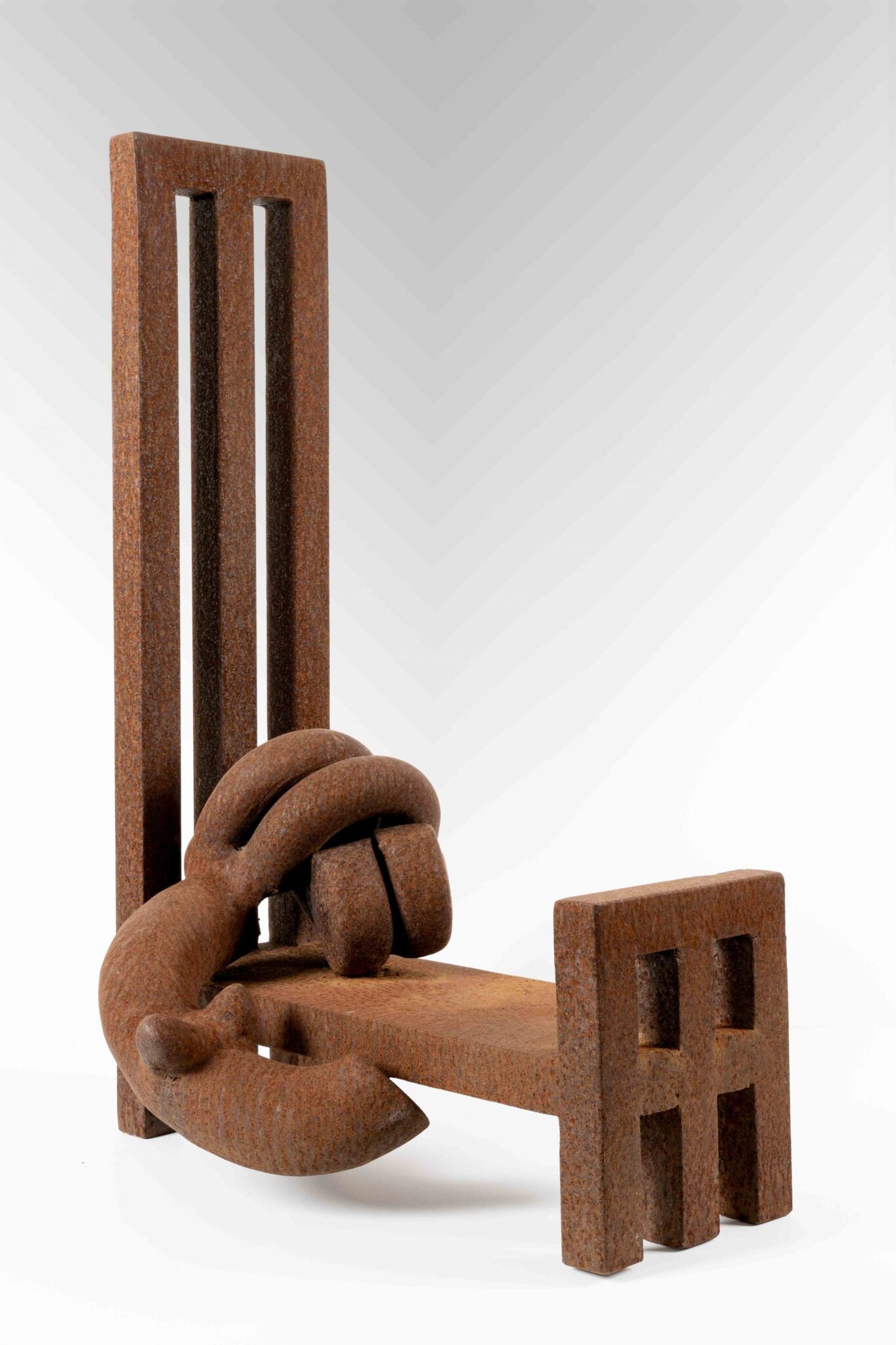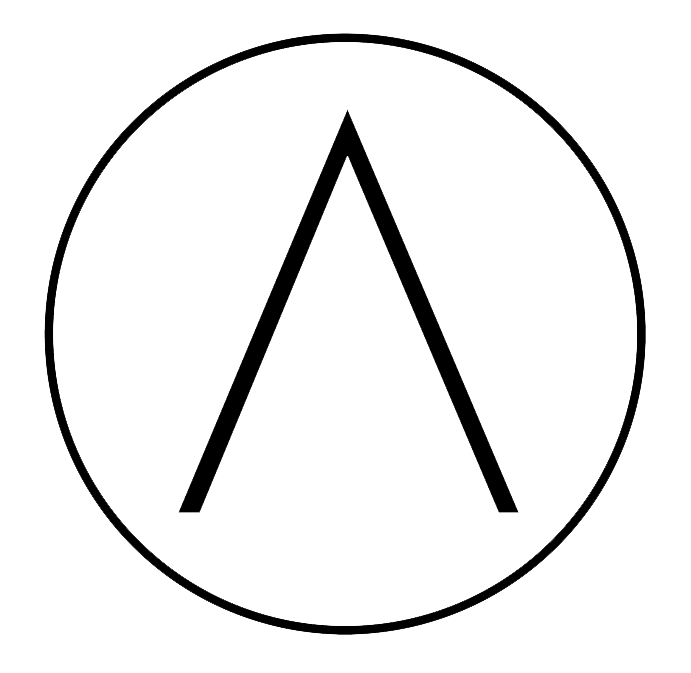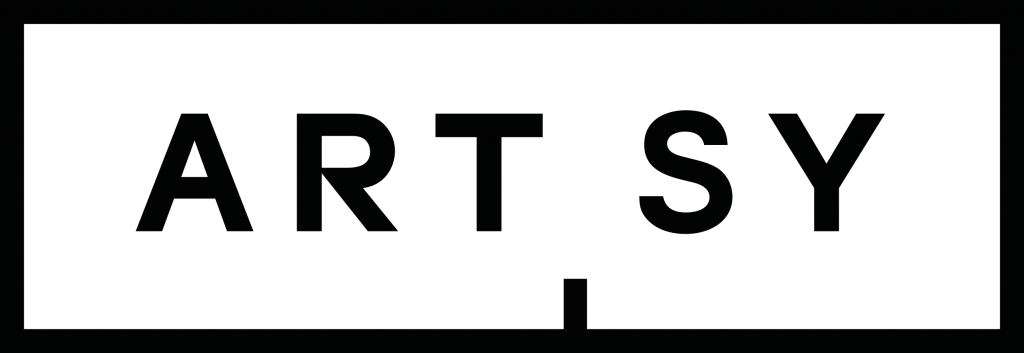Artistically known as ‘Pepe Abad’, he began his career working in Eduardo Gregorio’s workshop in Las Palmas de Gran Canaria and later in Martín Chirino’s in Madrid. Between 1962 and 1964, he took courses at the Pietro Vannucci Academy of Fine Arts in Perugia, Italy.
According to Lázaro Santana, the figurative stage of his work denotes some influence from Italian sculptors (Manzú, for example), and in his initial abstract essays, that of Chillida and Chirino, with whom he also shares his interest in forged material. L. Santana adds: “Rauschenberg and pop-art gravitate around the forms most enclosed in orthogonal rigidity constructions. Very close to surrealist objects, Dada language and Gothic imagination, appear his esoteric carpentry benches on which dissected crows perch, or his large black-painted altarpieces provided with images of disturbing ambiguity. Abad’s fantasy is perhaps expressed with greater freedom in his graphic work and in his ‘collages’; without excluding what this facet of his work may owe to Cornell and Arakawa, it is in it where the sculptor’s inventiveness unfolds with his best creative power.”
Pepe Abad’s enormous public sculptures, made based on different commissions, especially on the island of Tenerife, are very striking. His exhibition activity began in 1962 with an exhibition he shared with José Luis Fajardo, and since then his exhibitions have been incessant.
He is a Corresponding Academician of the San Fernando Academy of Fine Arts in Madrid. He requested his resignation from the Numerary status of the RACBA “for personal and professional reasons” that prevented him from being more directly involved in the dynamics of the corporation.
